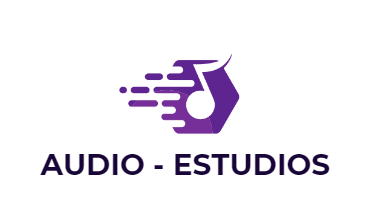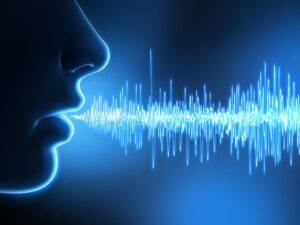Are you tired of listening to background noise ruining your audio recordings? Don’t worry, and there are simple and effective ways to remove unwanted background noise from your audio files. On this page, you will learn how to remove background noise from audio recording.
To remove background noise from an audio recording, you can use software such as Audacity or Adobe Audition to identify and reduce the background noise, use equalization to eliminate specific frequency ranges that are causing the noise, and apply a noise gate to automatically reduce or eliminate noise below a certain threshold.
Also, you can physically isolate the source of the noise by recording in a quiet location or using a soundproof booth, using filters to remove specific types of noise or editing sections of the recording that contain the noise.
What is background noise?
Background noise is any unwanted sound in an audio recording that is not part of the primary audio source. It can be caused by a variety of factors, including external sources such as traffic or construction noise or internal sources such as electronic interference or mechanical noise from equipment.
Also, background noise can interfere with the clarity and quality of an audio recording, making it difficult to understand or hear the primary audio source. It is often necessary to remove or reduce background noise in order to improve the overall quality of the recording.
How to remove background noise from audio recording
There are several methods you can use to remove background noise from an audio recording. Here are a few options:
Noise reduction software
There are many software programs that can help you remove background noise from an audio recording. Some popular options include Audacity, Adobe Audition, and RX Noise Reduction. These tools allow you to identify the background noise in your recording and reduce or eliminate it.
Equalization
Using equalization (EQ) can help you reduce or eliminate specific frequency ranges in your audio that are causing background noise. This can be done using software like Audacity or using a hardware EQ device.
Noise gate
A noise gate is a tool that can be used to automatically reduce or eliminate background noise in an audio recording. A noise gate works by setting a threshold level for the audio signal. If the signal falls below this threshold, the noise gate will reduce or eliminate the signal. This can be useful for reducing background noise in recordings that have quiet sections, such as during pauses in a conversation.
Isolation
If the background noise in your recording is coming from a specific location, you may be able to reduce or eliminate it by physically isolating the source of the noise. This can be done by using a soundproof booth or recording in a quiet location.
Filtering
You can use filters to reduce or eliminate specific types of noise in your audio recording. For example, you could use a low-pass filter to remove high-frequency noise or a high-pass filter to remove low-frequency noise.
Editing
If the background noise in your recording is consistent and occurs at regular intervals, you may be able to simply edit it out by cutting out the sections of the recording that contain the noise. This can be done using software like Audacity or a digital audio workstation (DAW).
Best tools for removing background noise from audio
There are many tools available for removing background noise from audio recordings. Some popular options include:
Audacity: Audacity is a free, open-source audio editor that is widely used for recording, editing, and processing audio. It has a range of features for removing background noise, including a noise reduction tool and the ability to apply EQ and filters to the audio.
Adobe Audition: Adobe Audition is a professional audio editing software that is widely used in the audio industry. It has a range of advanced features for removing background noise, including a noise reduction tool and the ability to apply EQ and filters to the audio.
RX Noise Reduction: RX Noise Reduction is a standalone software tool developed by iZotope specifically for removing background noise from audio recordings. It has a range of advanced features for identifying and reducing noise, including spectral editing and the ability to learn the characteristics of the noise in your recording.
Isolator: Isolator is a plugin for Adobe Audition and other DAWs that is specifically designed for isolating and removing background noise from audio recordings. It has a range of advanced features for identifying and reducing noise, including the ability to isolate and remove specific frequency ranges.
Noise Ninja: Noise Ninja is a plugin for Adobe Photoshop and other image editing software that can also be used for removing background noise from audio recordings. It has a range of advanced features for identifying and reducing noise, including the ability to learn the characteristics of the noise in your recording.
Easy steps for removing background noise from audio
Here are some easy steps you can follow to remove background noise from an audio recording:
- Import the audio file into your audio editor or noise reduction software.
- Use the noise reduction tool to analyze the audio and identify the background noise.
- Adjust the settings on the noise reduction tool to reduce or eliminate the background noise. This may involve setting a threshold level for the noise and adjusting the amount of reduction applied to the noise.
- Use EQ or filtering to further reduce or eliminate specific frequency ranges that are causing the background noise.
- Preview the audio to ensure that the background noise has been successfully removed or reduced.
- Export the audio file once you are satisfied with the result.
Note that the exact steps and settings may vary depending on the software you are using, so it may be helpful to refer to the software’s documentation or tutorial for more detailed instructions.
How to remove background noise in Audacity
To remove background noise in Audacity, follow these steps:
- Import the audio file into Audacity.
- Use the selection tool to select a section of the audio that contains only background noise (i.e., no dialogue or other important audio).
- Go to the “Effect” menu and select “Noise Reduction.”
- In the Noise Reduction window, click the “Get Noise Profile” button. This will analyze the selected section of audio and create a profile of the background noise.
- Use the selection tool to select the entire audio file.
- Go to the “Effect” menu and select “Noise Reduction” again.
- In the Noise Reduction window, adjust the settings as needed to reduce or eliminate the background noise. This may involve setting a threshold level for the noise and adjusting the amount of reduction applied to the noise.
- Preview the audio to ensure that the background noise has been successfully removed or reduced.
- If you are satisfied with the result, click “OK” to apply the noise reduction to the entire audio file.
- Export the audio file once you are finished.
Note that you may need to experiment with different settings to find the best results for your specific audio file. It may also be helpful to use EQ or filtering to further reduce or eliminate specific frequency ranges that are causing the background noise.
How to remove background noise in Adobe Audition
To remove background noise in Adobe Audition, follow these steps:
- Import the audio file into Adobe Audition.
- Use the selection tool to select a section of the audio that contains only background noise (i.e., no dialogue or other important audio).
- Go to the “Effect” menu and select “Noise Reduction / Restoration.”
- In the Noise Reduction window, click the “Learn Noise Print” button. This will analyze the selected section of audio and create a profile of the background noise.
- Use the selection tool to select the entire audio file.
- Go to the “Effect” menu and select “Noise Reduction / Restoration” again.
- In the Noise Reduction window, adjust the settings as needed to reduce or eliminate the background noise. This may involve setting a threshold level for the noise and adjusting the amount of reduction applied to the noise.
- Preview the audio to ensure that the background noise has been successfully removed or reduced.
- If you are satisfied with the result, click “OK” to apply the noise reduction to the entire audio file.
- Export the audio file once you are finished.
How to remove background noise in GarageBand
To remove background noise in GarageBand, follow these steps:
- Import the audio file into GarageBand.
- Use the selection tool to select a section of the audio that contains only background noise (i.e., no dialogue or other important audio).
- Go to the “Track” menu and select “Extract Noise Profile.”
- Use the selection tool to select the entire audio file.
- Go to the “Track” menu and select “Noise Gate.”
- In the Noise Gate window, adjust the settings as needed to reduce or eliminate the background noise. This may involve setting a threshold level for the noise and adjusting the amount of reduction applied to the noise.
- Preview the audio to ensure that the background noise has been successfully removed or reduced.
- If you are satisfied with the result, click “Apply” to apply the noise reduction to the entire audio file.
- Export the audio file once you are finished.
How to remove background noise with a noise gate
To remove background noise with a noise gate, follow these steps:
- Import the audio file into your audio editor or noise reduction software.
- Enable the noise gate by going to the relevant menu or setting in your software.
- Set the threshold level for the noise gate by adjusting the relevant control in your software. The threshold level is the point at which the noise gate will begin to reduce or eliminate the audio signal.
- Set the attack and release times for the noise gate by adjusting the relevant controls in your software. The attack time determines how quickly the noise gate will respond to the audio signal falling below the threshold level, while the release time determines how quickly the noise gate will return to its normal state once the audio signal rises above the threshold level.
- Preview the audio to ensure that the background noise has been successfully removed or reduced.
- If you are satisfied with the result, apply the noise gate to the entire audio file.
- Export the audio file once you are finished.
How to remove background noise with a noise reduction plugin
To remove background noise with a noise reduction plugin, follow these steps:
- Import the audio file into your audio editor or digital audio workstation (DAW).
- Enable the noise reduction plugin by going to the relevant menu or setting in your software and selecting the plugin.
- Follow the instructions provided by the plugin to analyze the audio and identify the background noise. This may involve selecting a section of the audio that contains only background noise or creating a noise profile.
- Adjust the settings on the noise reduction plugin as needed to reduce or eliminate the background noise. This may involve setting a threshold level for the noise and adjusting the amount of reduction applied to the noise.
- Preview the audio to ensure that the background noise has been successfully removed or reduced.
- If you are satisfied with the result, apply the noise reduction plugin to the entire audio file.
- Export the audio file once you are finished.
- How to remove background noise with a noise cancellation headset
- A noise cancellation headset is designed to reduce or eliminate background noise by using microphones to pick up and analyze the noise and then generate a counteracting sound wave to cancel out the noise. To use a noise cancellation headset to remove background noise, follow these steps:
- Put on the noise-cancellation headset and ensure that it is properly adjusted and seated on your head.
- Turn on the noise cancellation feature by pressing the relevant button or switching on the headset.
- Adjust the volume of the headset to your desired level.
- Begin using the headset as you normally would. The noise cancellation feature should automatically reduce or eliminate background noise.
Note that the effectiveness of the noise cancellation feature may vary depending on the specific headset you are using and the type of background noise you are trying to eliminate. Some noise cancellation headsets may be more effective at reducing low-frequency noise, while others may be better at reducing high-frequency noise.
It may also be helpful to experiment with the positioning of the microphones on the headset to find the best results for your specific situation.
Importance of background noise from an audio recording
Removing background noise from an audio recording is important for several reasons:
Clarity: Background noise can make it difficult for listeners to understand the content of the recording, especially if the noise is loud or there are multiple sources of noise. Removing the noise can improve the clarity and intelligibility of the audio.
Professionalism: A recording with a lot of background noise can be perceived as unprofessional, as it may make it seem like the recording was not done with care or attention to detail.
Distraction: Background noise can be distracting for listeners, making it more difficult for them to focus on the content of the recording. Removing the noise can help listeners stay engaged and focused on the content.
Quality: Removing background noise can improve the overall quality of the recording. This is especially important if the recording is being used for professional purposes, such as in a podcast or for a presentation.
Overall, removing background noise from an audio recording can help improve the clarity, professionalism, and quality of the recording, making it more enjoyable and effective for listeners.
Conclusion
It is important you learn how to remove background noise from audio recording if you want high-quality audio. Removing background noise from an audio recording is important because it can improve the clarity, professionalism, and overall quality of the recording, making it more enjoyable and effective for listeners.




